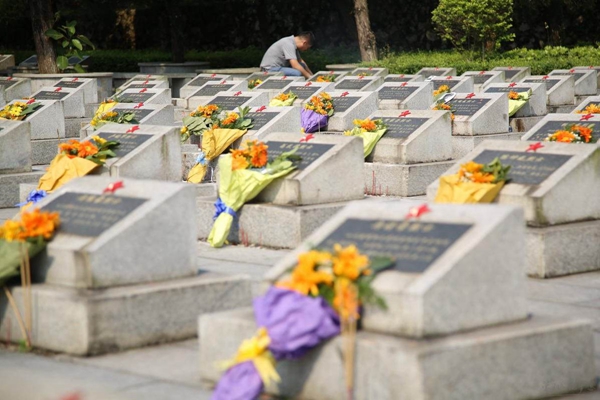Precision medicine summit held in Shenzhen
|
|
|
James Watson delivers a keynote speech at the opening ceremony of the 2017 Shenzhen International Precision Medicine Summit on April 6. [Photo/China.org.cn] |
Chinese universities, research institutes and companies are seeking synergy in their efforts to harness the nascent field of precision medicine that uses genomic, physiological and other data to tailor treatments to individuals in fighting deadly diseases.
Around 1,000 representatives from Chinese and overseas academic and business circles gathered in the southern city of Shenzhen to discuss the prospects for the future of life sciences and healthcare industries at the 2017 International Precision Medicine Summit April 6-7.
In a congratulatory letter to the event, Chen Zhu, former health minister and a famed biologist, said the emergence and rapid development of precision medicine offered new opportunities for healthcare development with strong hopes of being able to conquervarious deadly diseases.
China has made precision medicine a focus of its 13th Five-Year Plan (2016-2020), and various companies are engaged in ambitious efforts to collect a vast trove of genetic and health data, researching how to identify cancer markers in the blood, and launch consumer technologies tapping the potentially lifesaving information.
“Fresh advances in human genome sequencing brought about by breakthroughs in biochip and protein technology, as well as improvement in molecular imaging, surgery navigation, minimal invasive technology and big data analysis also provide new opportunities for precision medicine,” Chen said.
Speaking of treating deadly diseases, James Watson, the visiting Nobel laureate for his co-discovery of the DNA double helix, was disappointed that cancer mortality hasn’t seen little change in the past 40 years, saying that “most cancer patients still suffer and die.”
“Given the wealth and all the devotion from society, China could be the No.1 or No.2 science-based nation in the world within the next 50 years if it can spend money wisely, create good institutions and encourage individual science projects,” Dr. Watson told China.org.cn.
He predicted the next great scientific discovery could be made in China if the country created a stronger pro-science environment to promote research.
He calls the country to mobilize its huge strength that could lead to a quick and inexpensive cure for deadly diseases.
The Nobel prize-winner was credited as the principal science consultant with the CheerLand Investment Group, which is strongly involving in promoting a bright future for precision medicine.
The company has established an institute for precision medicine in partnership with Southern University of Science and Technology.


